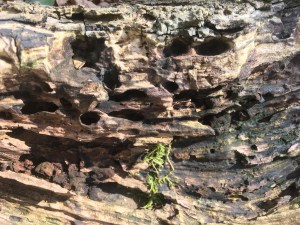Dung Beetles
Dung beetles provide a wide range of ecosystem services that help to maintain healthy pastures and soils. These include the most obvious, the consumption of dung thereby removing it from the fields thus reducing pasture fouling, but also some that you may not have considered. As the beetles tunnel down through the soil, burying the dung for breeding purposes, essential nutrients are recycled within the soil profile. This improves grass growth and provides a direct benefit to grazing animals. The larger species such as the Minotaur beetle (Typhaeus typhoeus) can tunnel a metre or more, this action breaks up the ground and improves drainage, especially useful on clay soils.
In addition, dung beetles also reduce nuisance fly populations by transporting phoretic mites that eat fly eggs and help control intestinal parasites by reducing dung suitability for worm larvae. The beetles are also an important food source for many other farmland favourites such as bats and birds.

Supporting dung beetles on your farm not only helps keep pasture and livestock healthy, it also represents good economic sense. It has been estimated that dung beetles save the UK cattle industry £367 million per annum through the provision of ecosystem services (Beynon et al., 2015).
A Natural England commissioned report found that about half of the dung beetle species in the British Isles are in decline and a few have already become regionally extinct. This decline is due to a number of factors including the loss of permanent pasture, removal of livestock from fields for extended periods and an increase in the use of broad spectrum veterinary wormers such as ivermectin.
Continuity of the dung supply and diversity of habitat are key factors in supporting a diverse range of dung beetle species on the farm. If possible, maintain some outdoor grazing year-round, even if only a few animals. Planting a group of trees and grazing within them will provide variety of forage and shelter for livestock and support the shade loving dung beetles too.
Broad spectrum livestock wormers such as avermectin are detrimental to beneficial dung invertebrates. These chemicals are excreted in the dung for many weeks after treatment and a range of lethal and sub-lethal effects occur depending on the concentration. Such effects include slowing beetle larvae development, reducing the size attained at adulthood and reduced breeding capacity. Cutting down the use of chemicals on the farm with a sustainable worm control policy that includes monitoring with faecal egg counts will help. Treating animals only when necessary will save money and also slow the rate of anthelmintic resistance. As a natural alternative in a rotational system, consider using herbal leys. Sainfoin, birdsfoot trefoil and chicory all have anthelmintic properties. The latter has been shown to reduce worm burden in sheep by as much as 40%. In permanent grasslands, grazing cattle, sheep and horses together helps. Mixed species grazing works by reducing the stocking density of the parasite host – cattle, horse and sheep worms are often different species that require different conditions.
Deadwood Beetles
Deadwood is an important habitat and critical for biodiversity within the wider landscape. The loss of ancient and veteran trees has had an impact on species dependent on dead and decaying wood. According to the IUCN almost a fifth of assessed European saproxylic beetles are considered to be at risk of extinction. The dead wood habitat is often not a quick one to replace, it will take hundreds of years for an oak to grow and decay. To learn more about the value of old trees, visit the Ancient Tree Forum website. In addition, many people have become ‘tidy’ in their gardening habits, preferring to remove old trees and dead branches instead of leaving them for nature to recycle.
A number of scarabs, such as the Lucanidae depend on decaying wood for at least part of their lifecycle. They are a key component in the decomposition and recycling of wood both above and below ground. Saproxylic species create galleries through feeding and burrowing activity, enhancing physical decomposition but also providing entry points for other invertebrates and fungal inoculation. The beetles are also a good source of food for bats and birds such as woodpeckers.

The People’s Trust for Endangered Species (PTES) have been running the Great British Stag Hunt for over 20 years and they have also worked to help conserve the Noble Chafer Gnorimus nobilis.